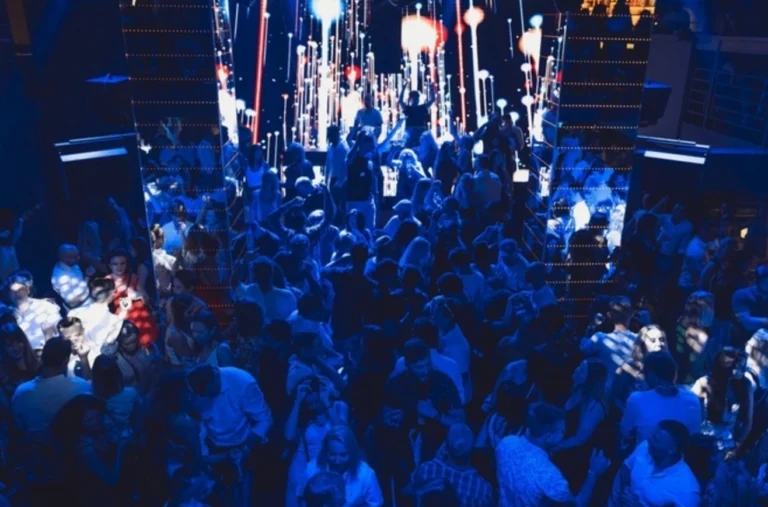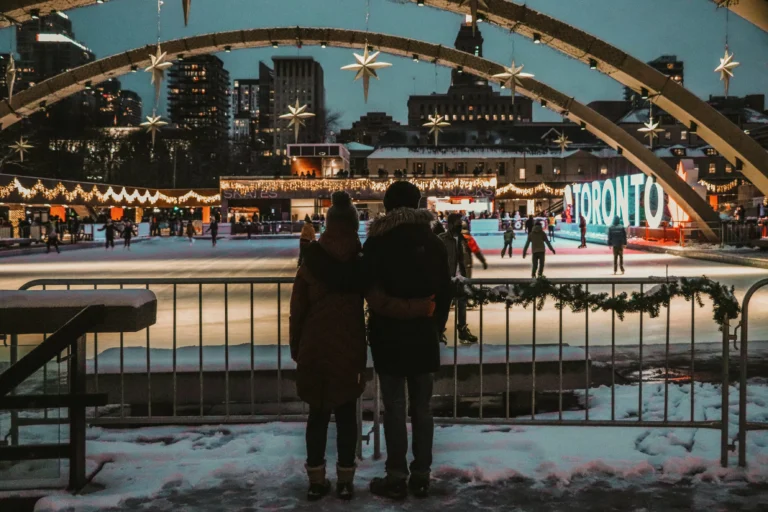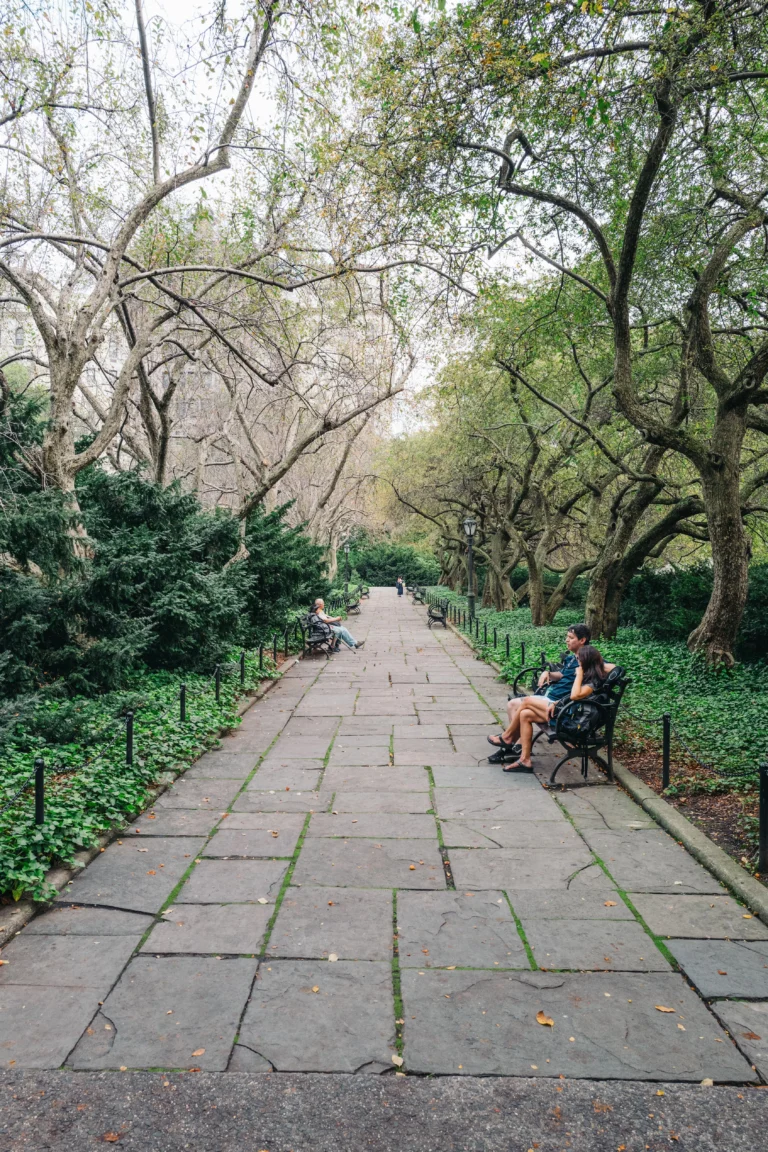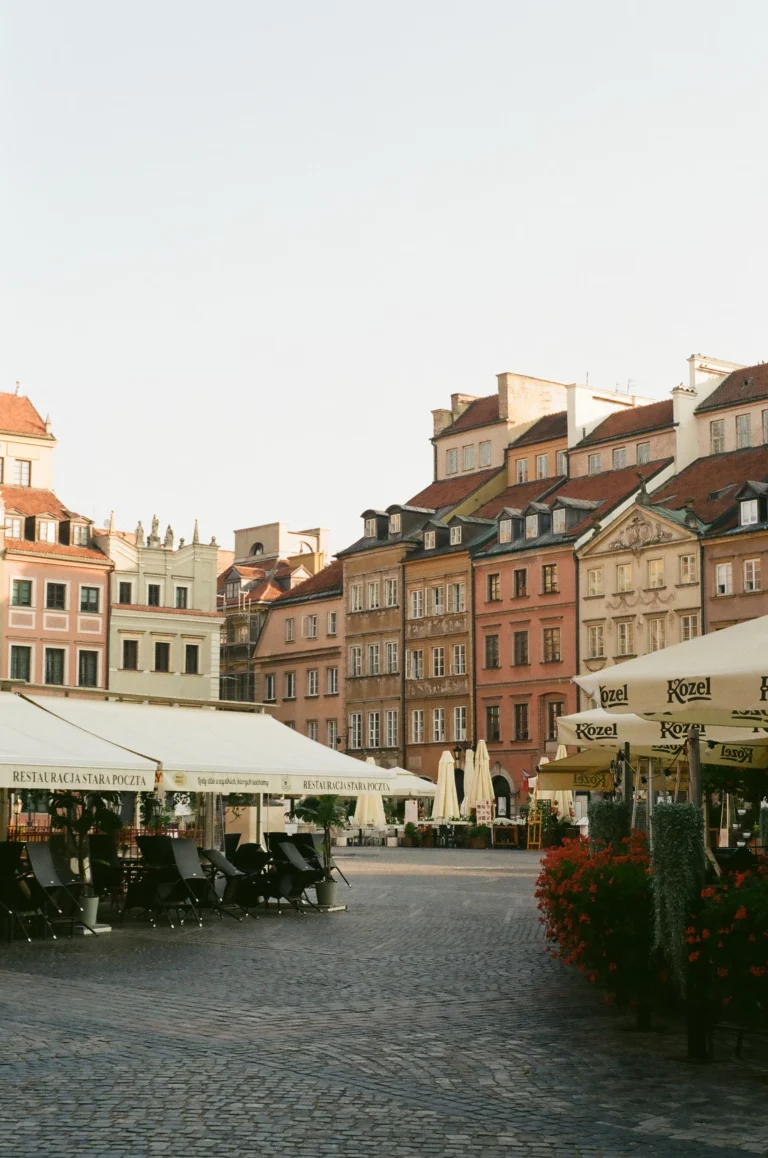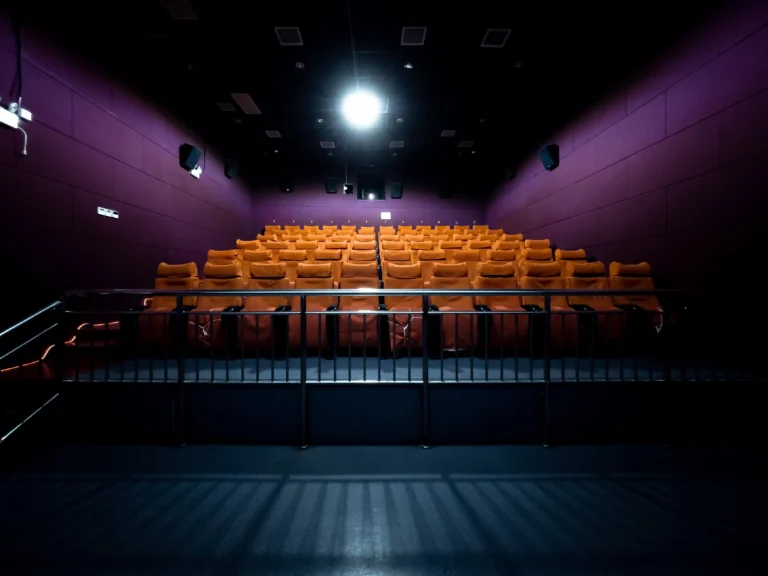Only have two days in Warsaw but want to make the most of it? You can explore the Polish capital’s highlights in 48 hours. The route takes you through eight districts – from the medieval Old Town to the trendy Powiśle neighborhood.
Over two days, you’ll make your way from the Royal Castle to the observation deck of the Palace of Culture and Science, and from the peaceful paths of Royal Łazienki Park to the vibrant streets of Praga.
We’ll spend the first day exploring the historic center and the city’s beautiful parks. The second day is all about discovering the less touristy but equally fascinating areas.
The itinerary takes about 20 hours, including breaks for coffee and lunch. While the pace is pretty brisk, it’s doable – the attractions aren’t far from each other, and you can hop on public transport when needed. Feel free to skip a spot or two if they don’t catch your interest.
This route works year-round, though summer brings some perks – you’ll get to see the fountains in action and enjoy the beach bars along the Vistula River.
Want to delve deeper into Warsaw’s atmosphere? Check out our guides to the city’s best restaurants, cozy cafes, and must-visit museums.
DAY 1
Old Town (08:30-10:30)
Start your day in the Old Town before the crowds roll in. It’s just a 7-minute walk from Ratusz Arsenał metro station to the Market Square – the beating heart of historic Warsaw.
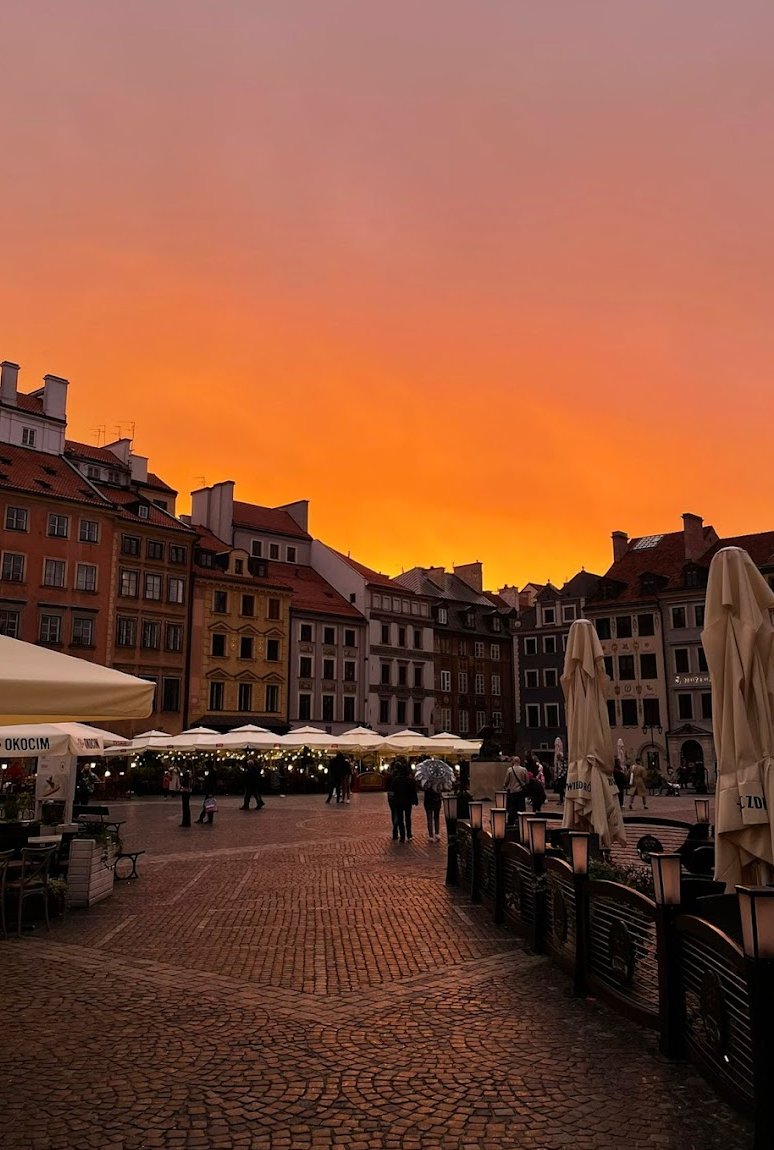
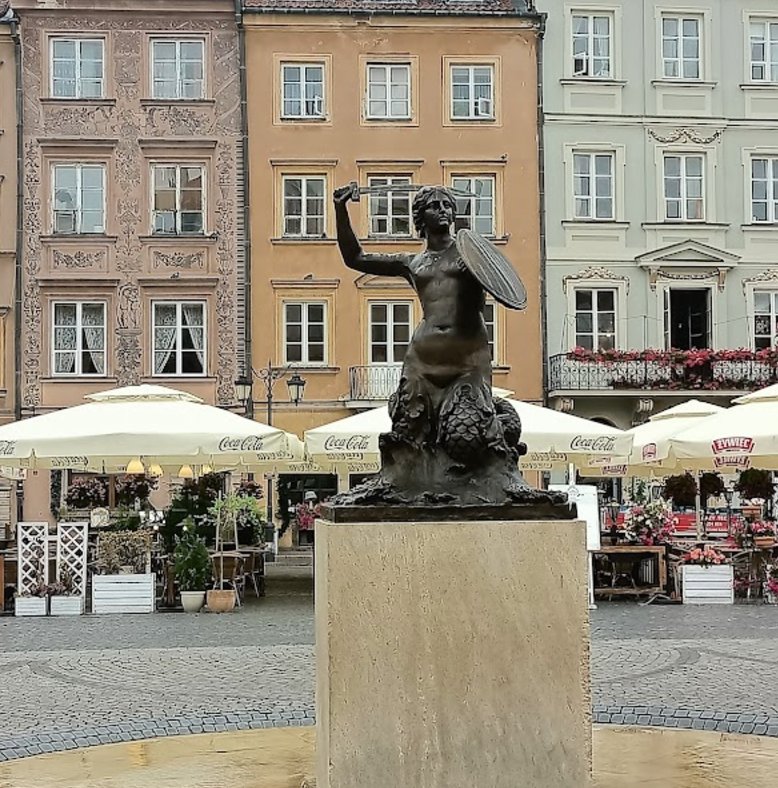
You’ll find yourself surrounded by colorful merchant houses, rebuilt after the war using historical drawings and paintings as references. The square’s centerpiece is the Mermaid statue – Warsaw’s guardian – with charming cafes dotted around the edges.

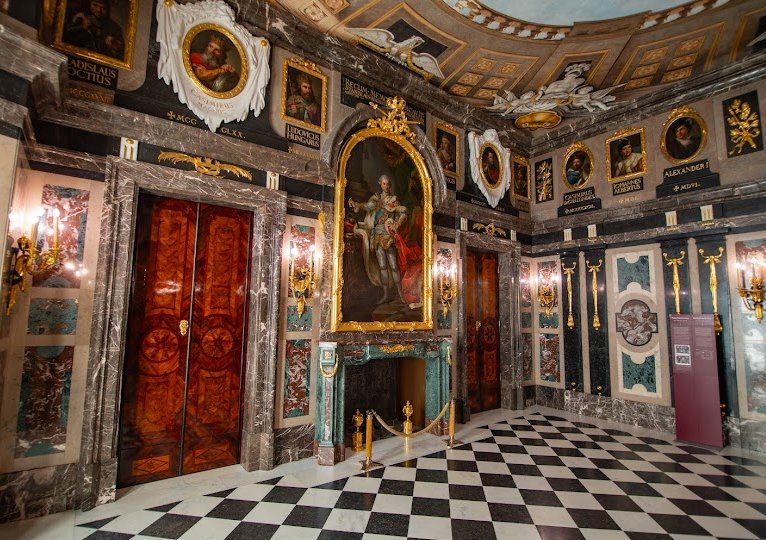
Head from there to the impressive Royal Castle, once home to Polish monarchs and now housing a collection of Rembrandt paintings. Pop into St. John’s Cathedral, where Polish kings were crowned.
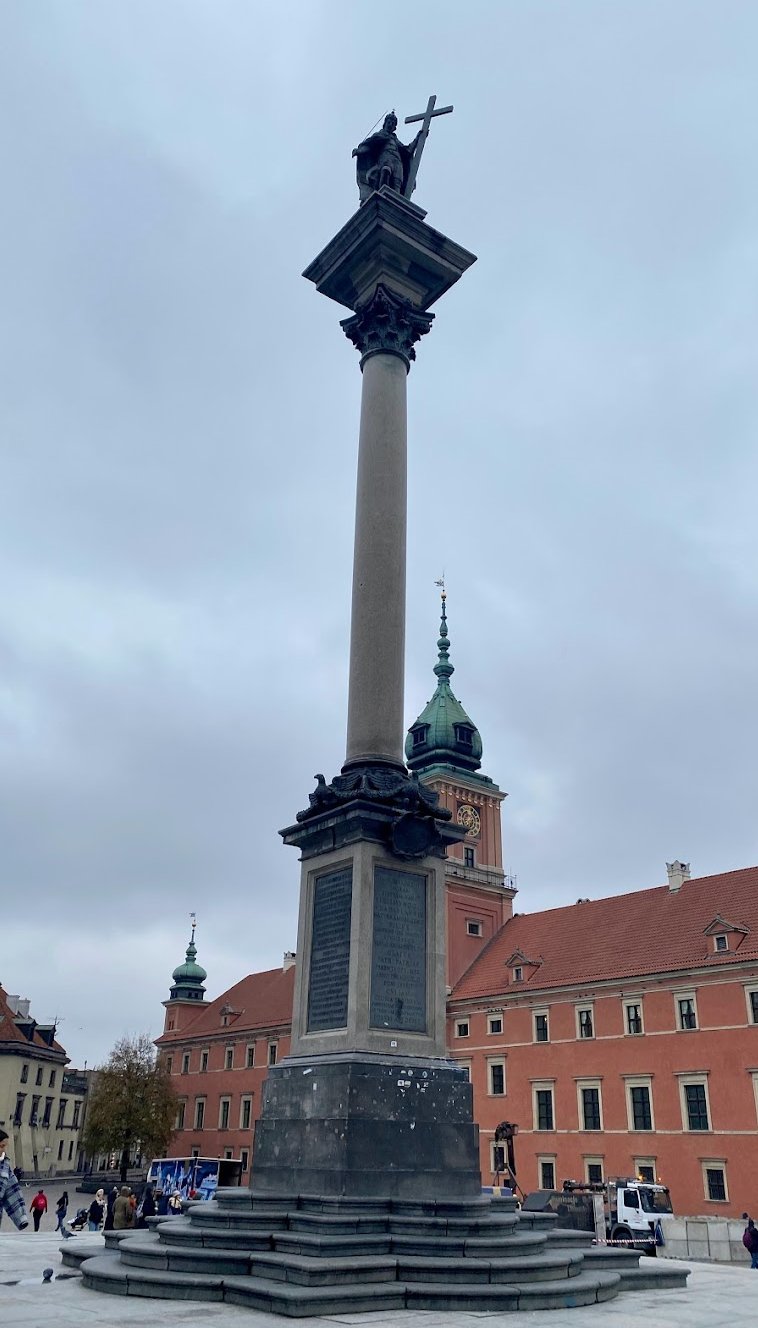
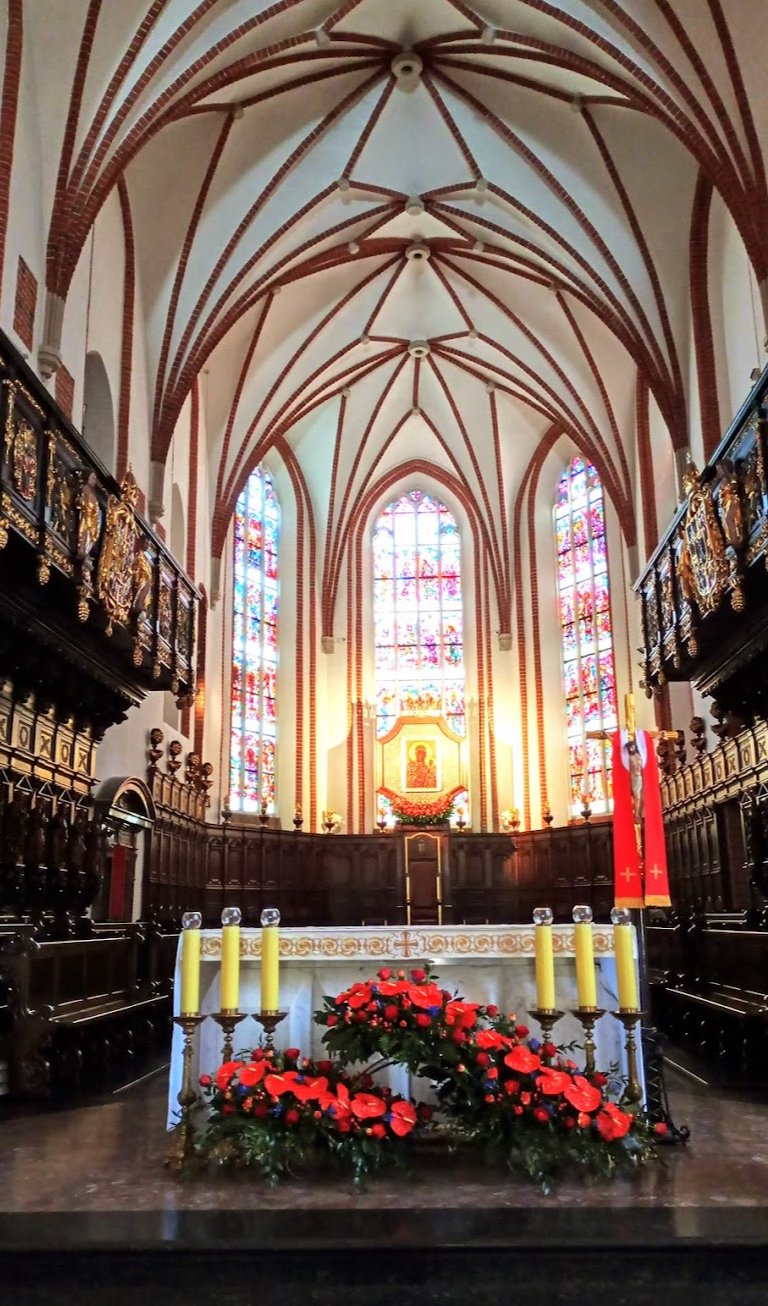
Next to the castle stands Sigismund’s Column, reaching 22 meters high – the city’s oldest non-religious monument, offering great views over Castle Square. Don’t miss the Warsaw Museum building along the way, with its facade featuring typical old town architectural details.
Two hours here lets you soak in medieval Warsaw’s atmosphere and snap some photos without fighting through crowds.
Defensive Fortifications (10:45-11:30)
The Barbican kicks off medieval Warsaw’s defense system. These fortifications used to wrap around the entire city, keeping enemies at bay.
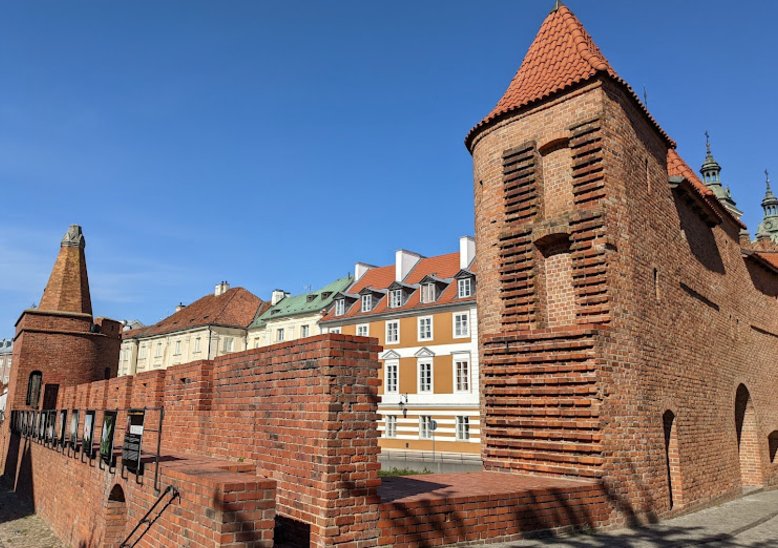

Take a walk along the preserved section of city walls connected to the Barbican to get a sense of these ancient defenses. You’ll find information boards with old photos and diagrams showing how the 15th-16th century defense system looked.
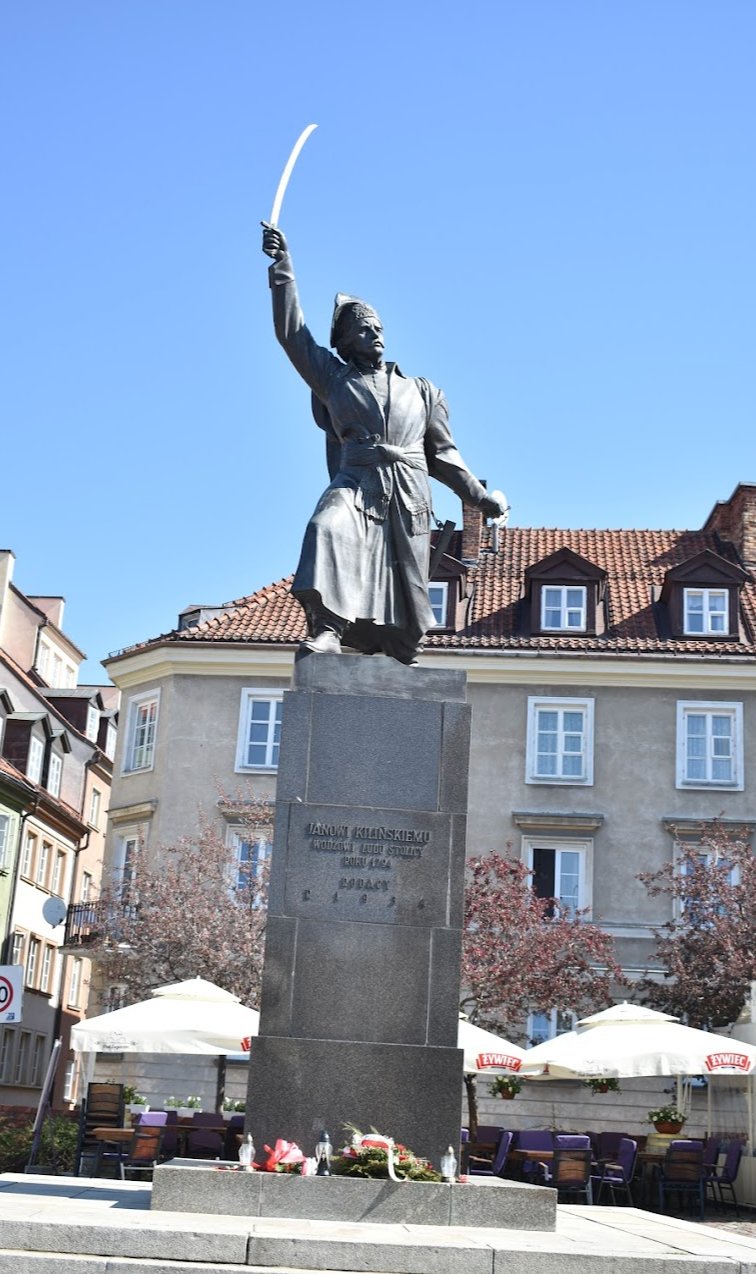
This part of the route includes the monument to Jan Kiliński – a shoemaker turned revolutionary leader during the 1794 Kościuszko Uprising.
These days, the Barbican is a popular hangout spot and event venue, especially during summer. You’ll often find exhibitions about the city’s history inside its walls.
While only parts of the city walls remain standing, this section gives you a good idea of what the medieval defense system was like.
Krakowskie Przedmieście (11:30-13:00)

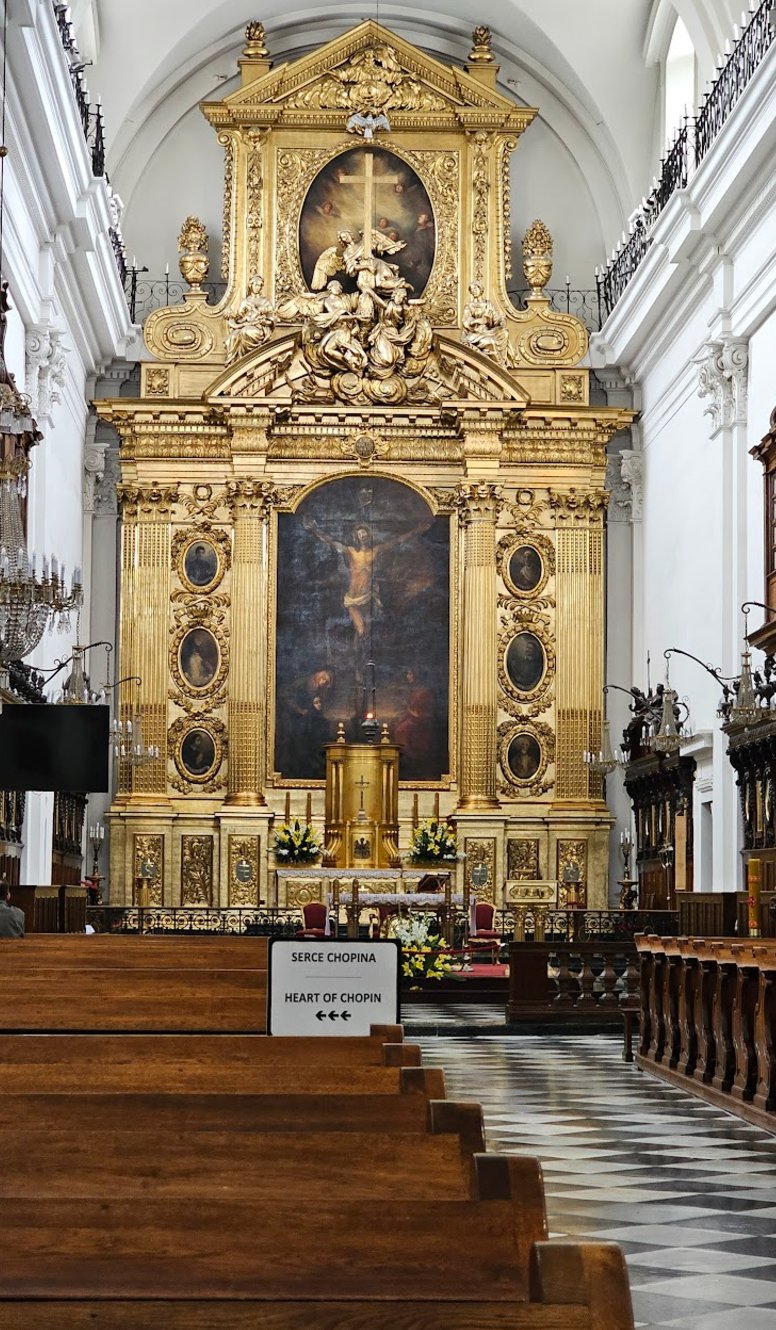
Continue your walk at one of Warsaw’s most charming spots – Krakowskie Przedmieście. Begin at the Copernicus Monument, where you’ll often spot tourists and students hanging out, then make your way to the University of Warsaw, which has been shaping Poland’s brightest minds since 1816.
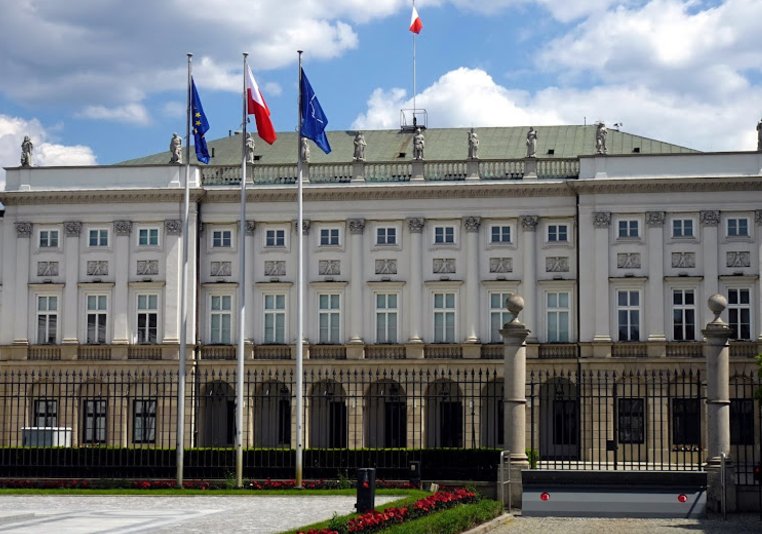
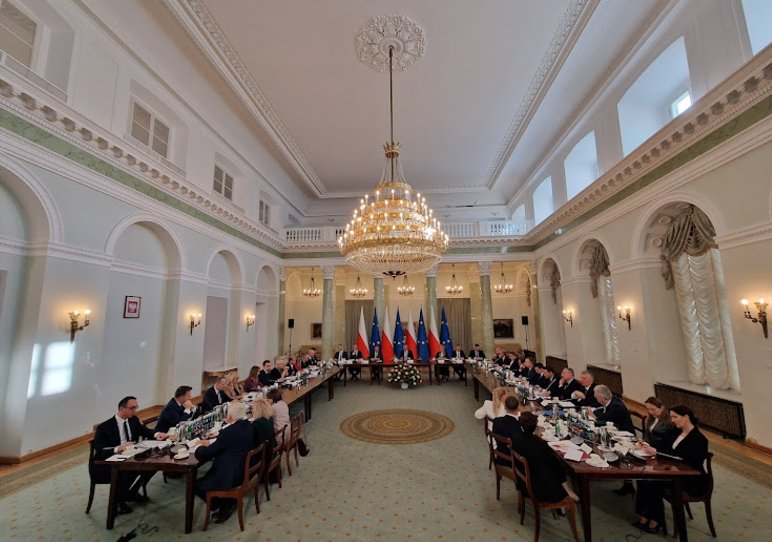
Don’t miss St. Anne’s Church along the way – it’s a beautiful example of 18th-century Baroque architecture that’s still intact. Keep an eye out for the Presidential Palace (the president’s home since 1994) with its impressive classical facade and the guard-changing ceremony out front.
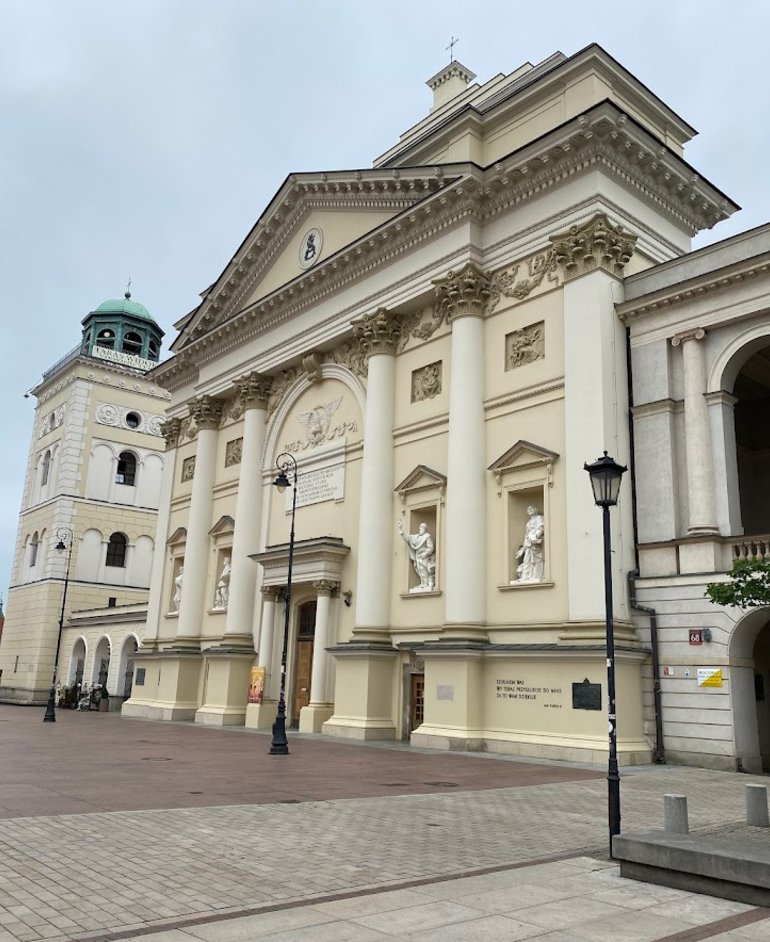
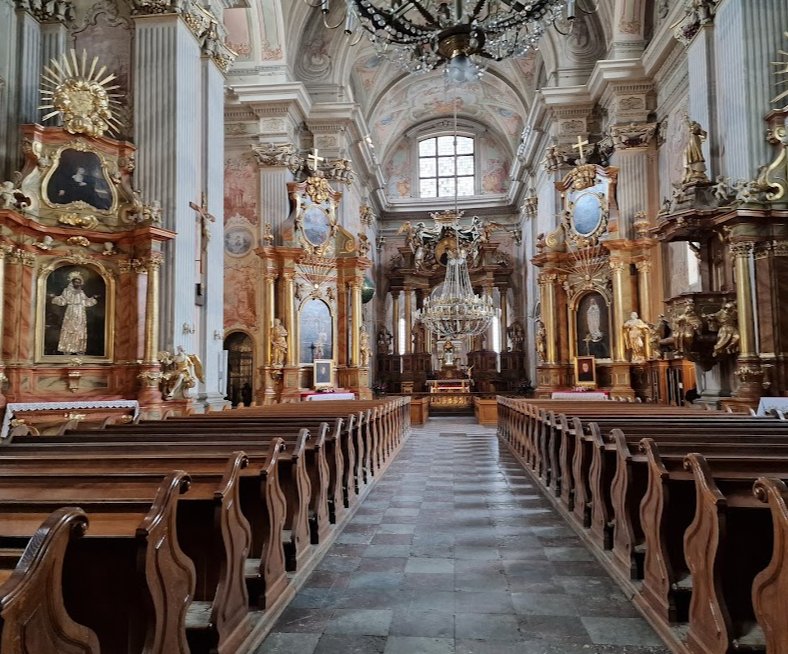
Here’s something unique: the Holy Cross Church houses Chopin’s heart, which is actually built into one of its columns. You can take a break at Chopin’s musical bench nearby and listen to some of his pieces – just press the button and enjoy.
This stretch is perfect for taking it easy – there are plenty of lovely cafes where you can grab a coffee and watch the world go by. You can cover all the main sights along this historic street (which connects the Old Town to the modern center) in about 90 minutes without rushing.
Nowy Świat (13:00-14:00)
After Krakowskie Przedmieście, you’ll walk right into Nowy Świat Street, one of Warsaw’s main shopping streets.
As you stroll along, you’ll pass beautiful old townhouses from the 18th and 19th centuries, now filled with shops, restaurants, and cafes.
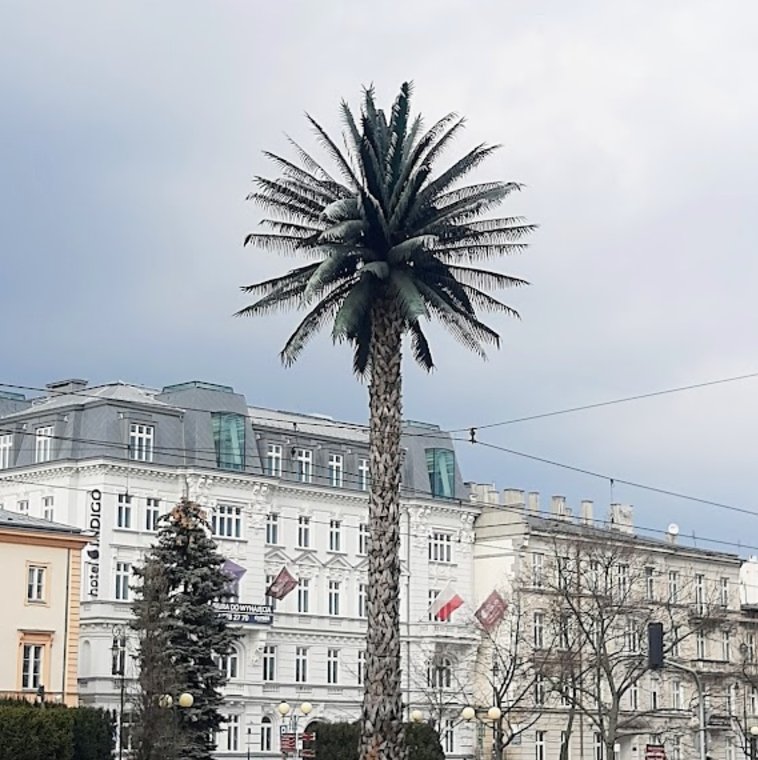
At the end, you’ll come across something unexpected – a 15-meter metal palm tree in the middle of a roundabout. It’s a piece of modern art that’s become one of Warsaw’s quirky modern landmarks.
City Center (14:15-15:15)
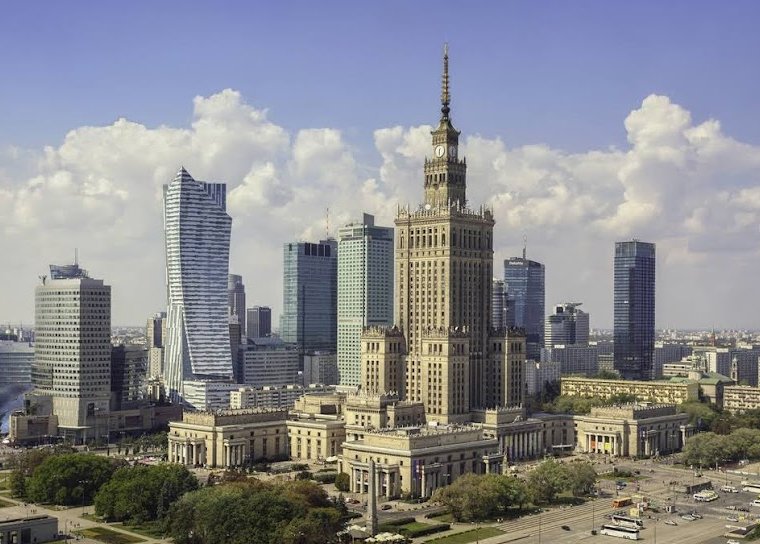

Next up is the Palace of Culture and Science – you can’t miss it, it’s Warsaw’s post-war giant. Head up to the observation deck on the 30th floor for amazing city views from 114 meters up.
From here, you get a great view of the contrast between the modern business district’s skyscrapers and the city’s historic areas. The building itself is pretty busy – it’s home to four theaters, a cinema, and several museums. If you’re looking for evening entertainment, check out what’s on at the ticket offices.
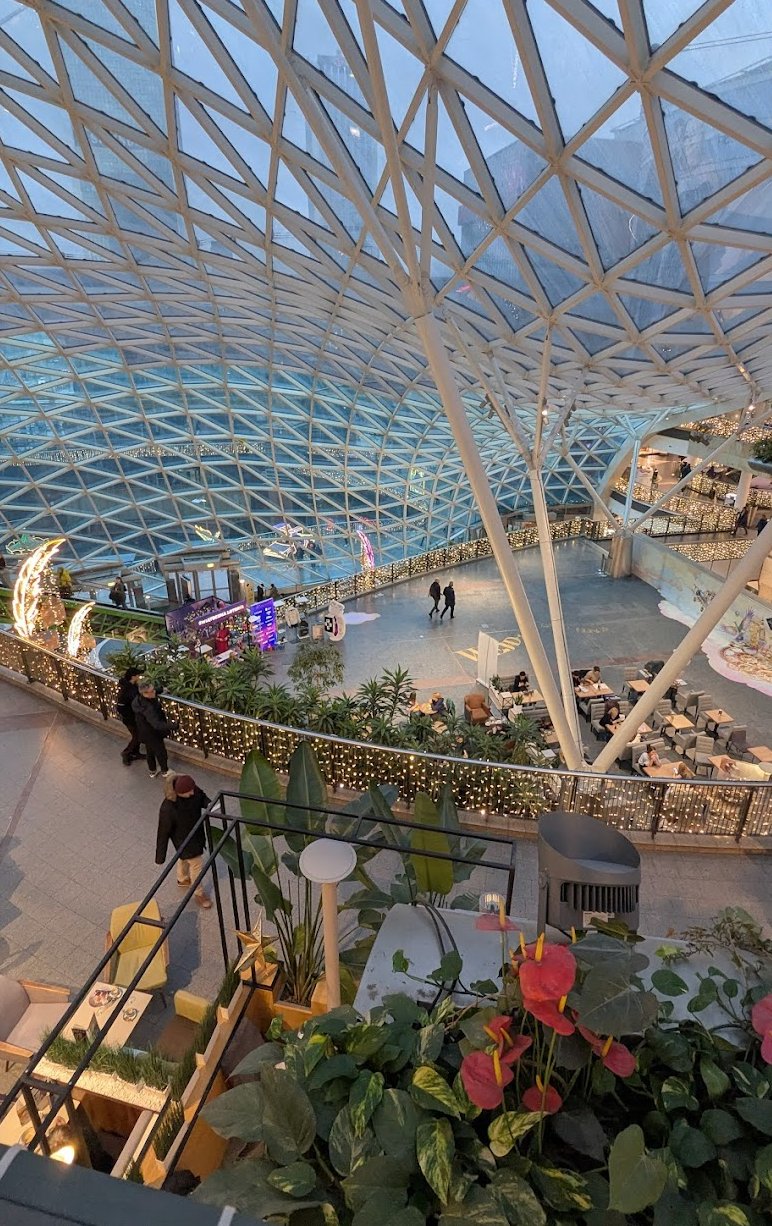
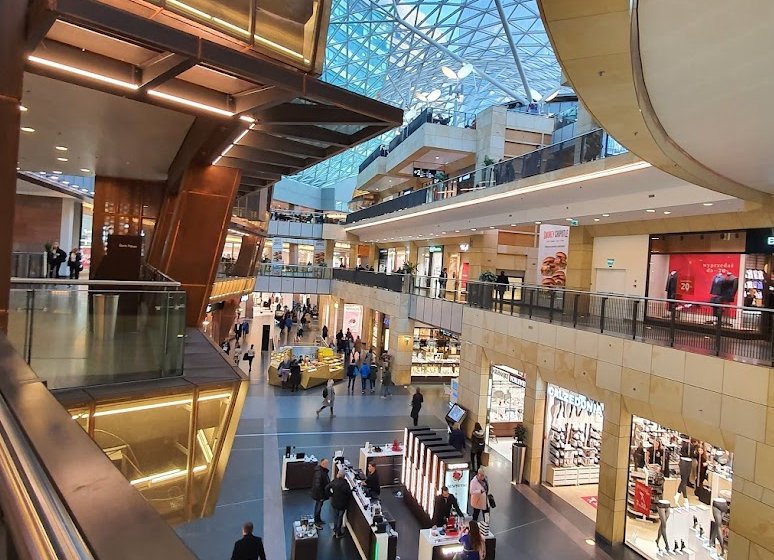
Right next door is Złote Tarasy shopping center, with its distinctive wavy glass roof. It’s perfect for a shopping break or a quick bite at one of its many cafes – there are over 200 stores to choose from.
The Warszawa Centralna train station is just around the corner, showing off its 1970s modernist style. This whole area really shows you how Warsaw mixes its socialist-era architecture with contemporary buildings – it’s quite a sight.
Your Way to Łazienki (15:30-16:00)
From Złote Tarasy mall, head down the bustling Marszałkowska Street – one of Warsaw’s main shopping streets. You’ll pass through Zbawiciela Square, where several of Warsaw’s major roads meet.

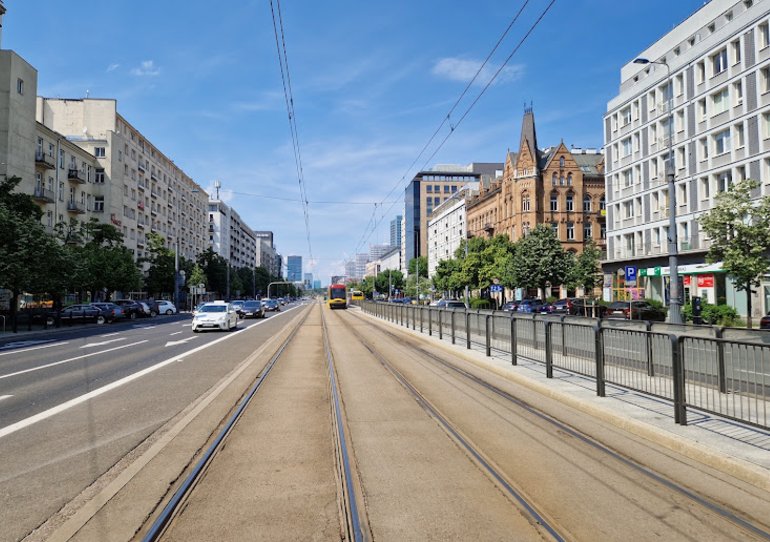
Keep an eye out for the Church of the Savior – one of the city’s largest churches dating back to the late 19th century. If you’re lucky with the weather, head up to the observation deck for some great views of central Warsaw.
Following Marszałkowska will bring you to Łazienki Park. As you walk, check out the historic buildings lining both sides of the street – many were carefully rebuilt after WWII.
When you hit the intersection with Piękna Street, take a right – you’ll reach the main entrance to the royal park in about 5 minutes. If you need a break, there are some nice cafes along the way where you can grab a quick coffee before exploring the park.
Royal Łazienki Park (16:00-18:00)
Royal Łazienki is Warsaw’s largest park and definitely the most relaxing stop on this route.
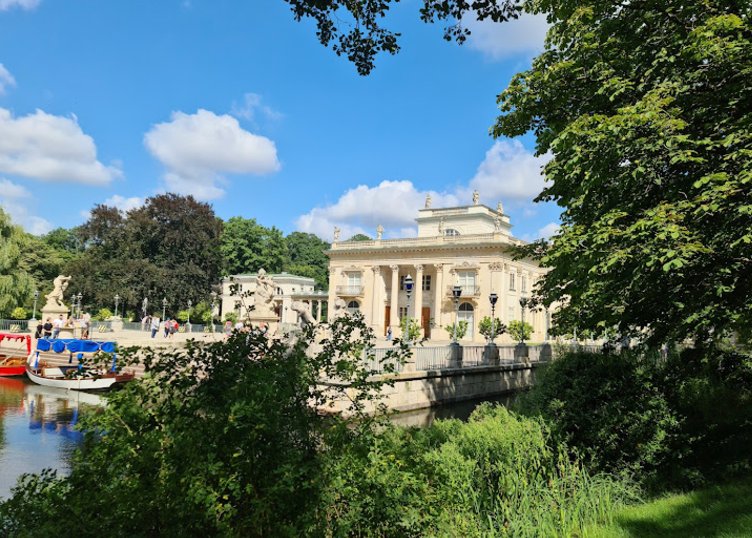
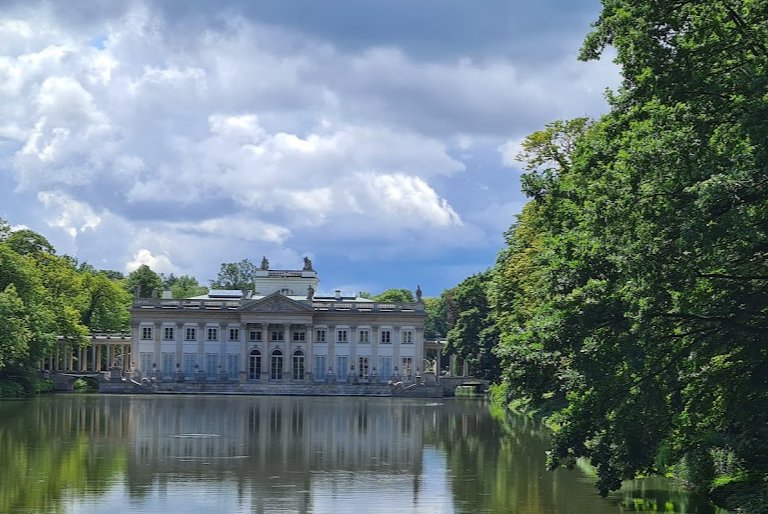
Make your way to the Palace on the Isle – it used to be the summer residence of Poland’s last king, Stanisław August. Keep your camera ready for the peacocks that roam freely around the grounds. During summer, you can catch free Chopin concerts by the composer’s monument every Sunday.
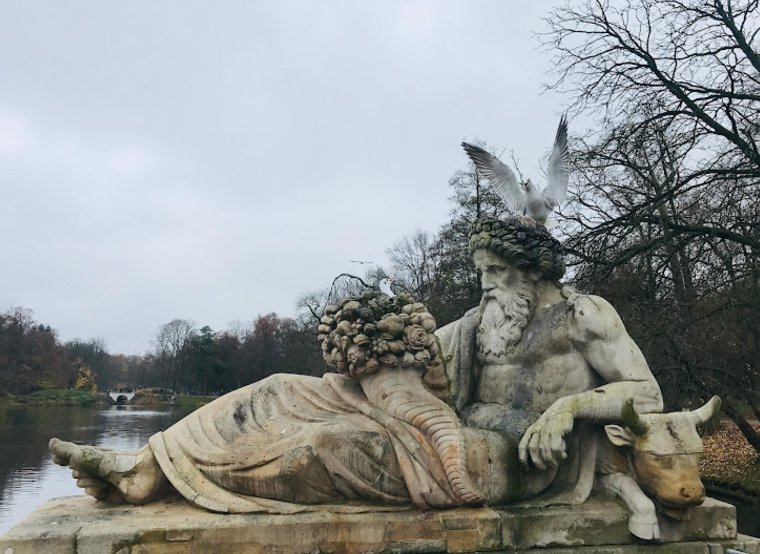
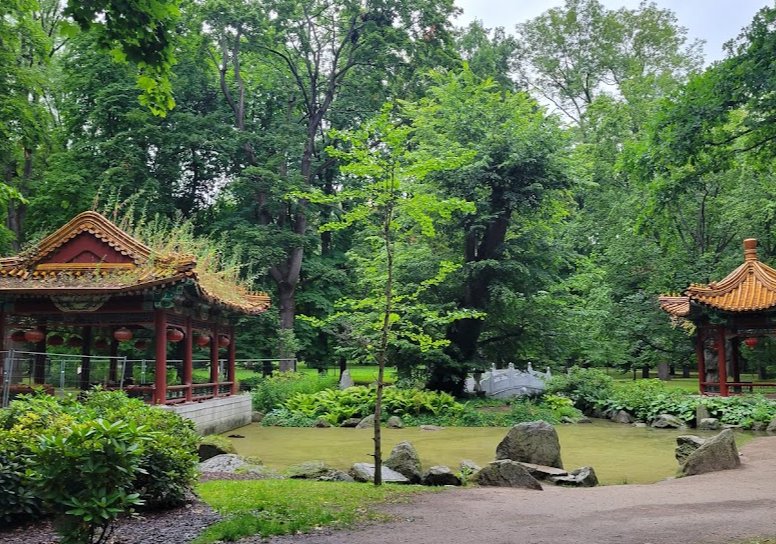
Don’t miss the amphitheater on its own little island – it’s pretty unique with a water channel separating the stage from the seats. Take a walk up to Belvedere Palace for some lovely views over the lower park.
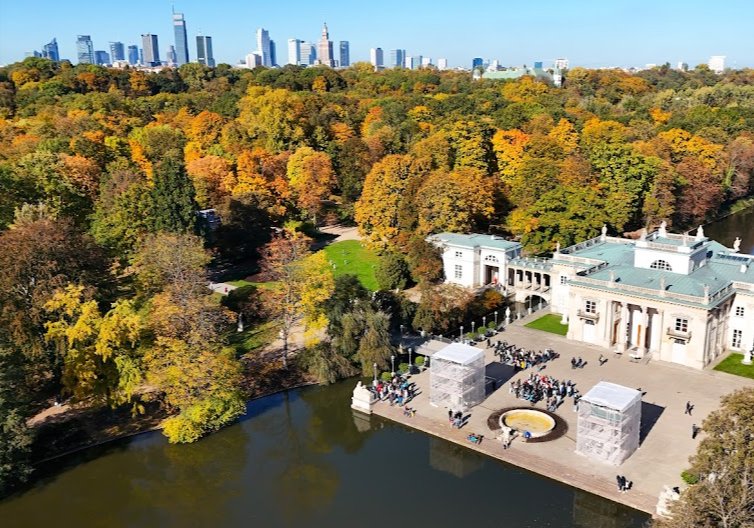

There are plenty of quiet paths and benches perfect for taking a breather after your busy day. Pro tip: bring some nuts – the squirrels here are friendly enough to eat right from your hand.
If the weather’s nice, why not rent a boat and paddle around the lake near the Palace on the Isle?
Ujazdów Area (18:00-19:30)
From Łazienki, make your way to Ujazdów Park – it’s less touristy but just as interesting. The park is dominated by Ujazdów Castle, once a royal residence and now home to the Center for Contemporary Art.
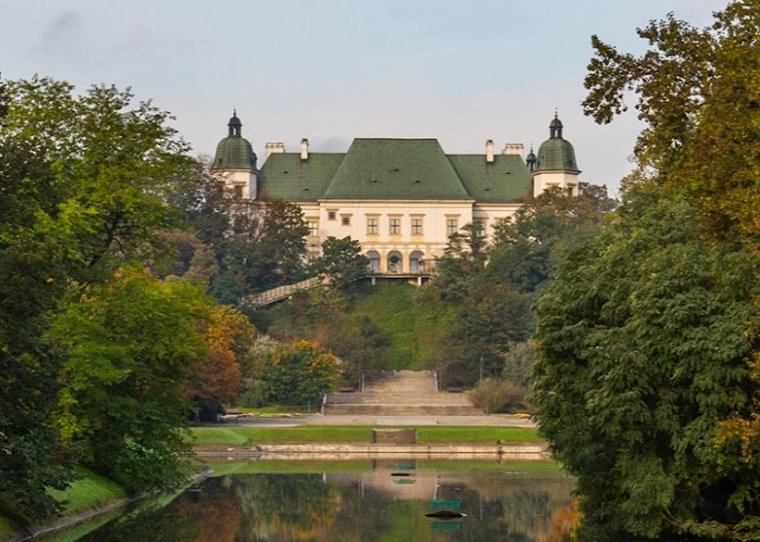
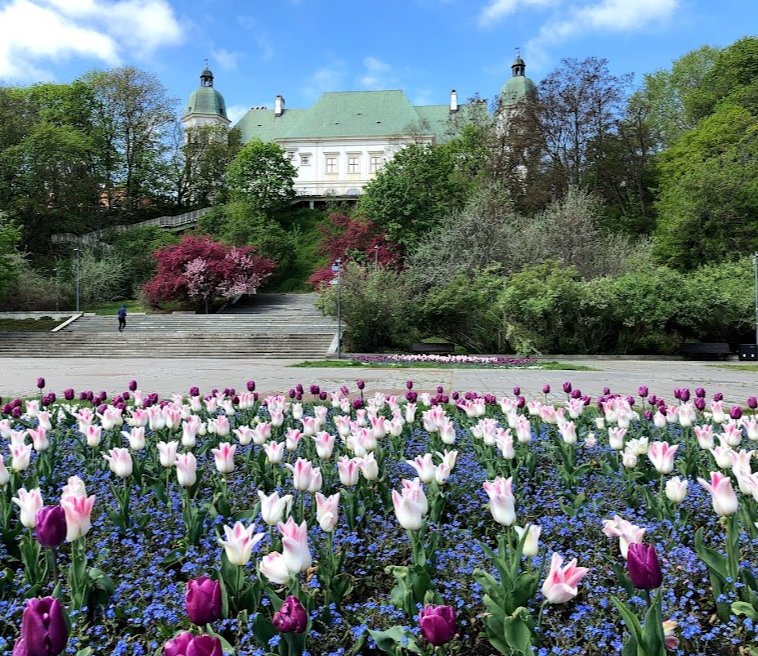
Pop in to check out the rotating exhibitions by Polish and international artists. Walking toward the Zachęta National Gallery, you’ll spot some beautiful early 20th-century villas that give you a real feel for pre-war Warsaw.
Zachęta Gallery houses Poland’s biggest collection of contemporary art. When you’re in the square outside, take a moment to check out the Józef Piłsudski monument.
If you’ve got time to spare, take a stroll down Piękna Street with its charming Art Nouveau cafes. The whole area looks especially magical at sunset when the old buildings catch the last rays of sun.
DAY 2
Praga District (09:00-11:00)
Kick off your morning on the Vistula’s right bank in Praga – a historic neighborhood that still captures the spirit of pre-war Warsaw.
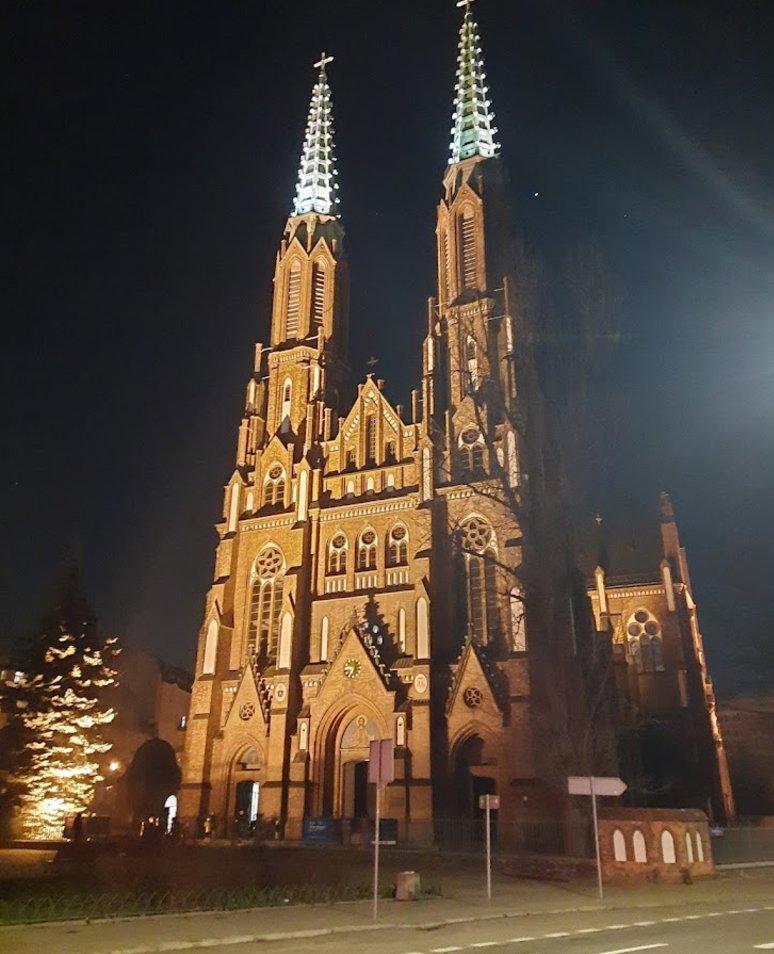
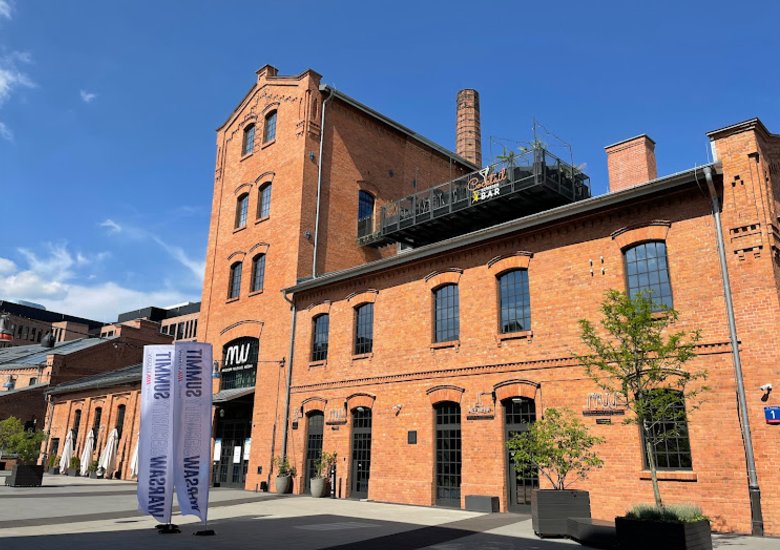
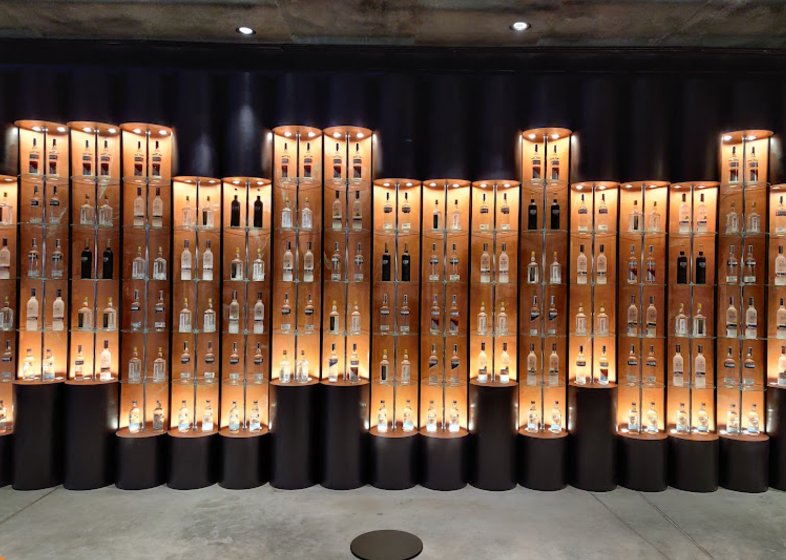
From Dworzec Wileński metro station, make your way to the striking St. Michael and St. Florian’s Cathedral with its Neo-Gothic architecture. Just a short walk away, you’ll find the Polish Vodka Museum in the old Koneser factory building, where you can dive into the story behind Poland’s famous spirit.
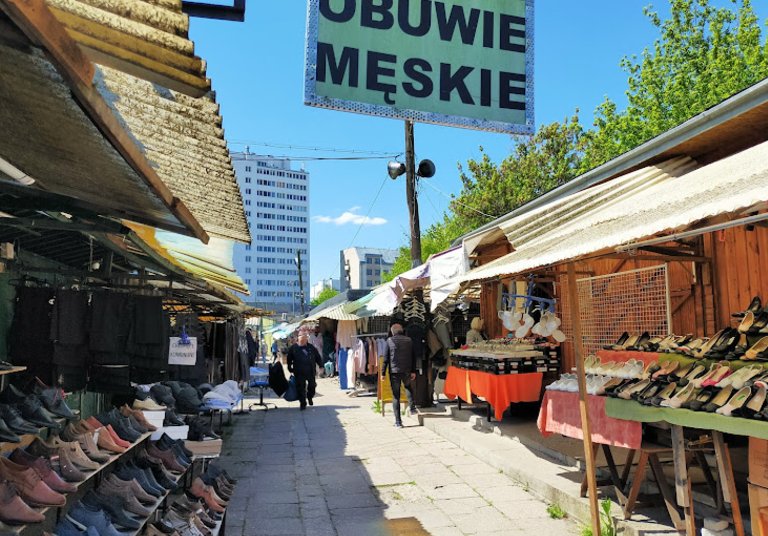
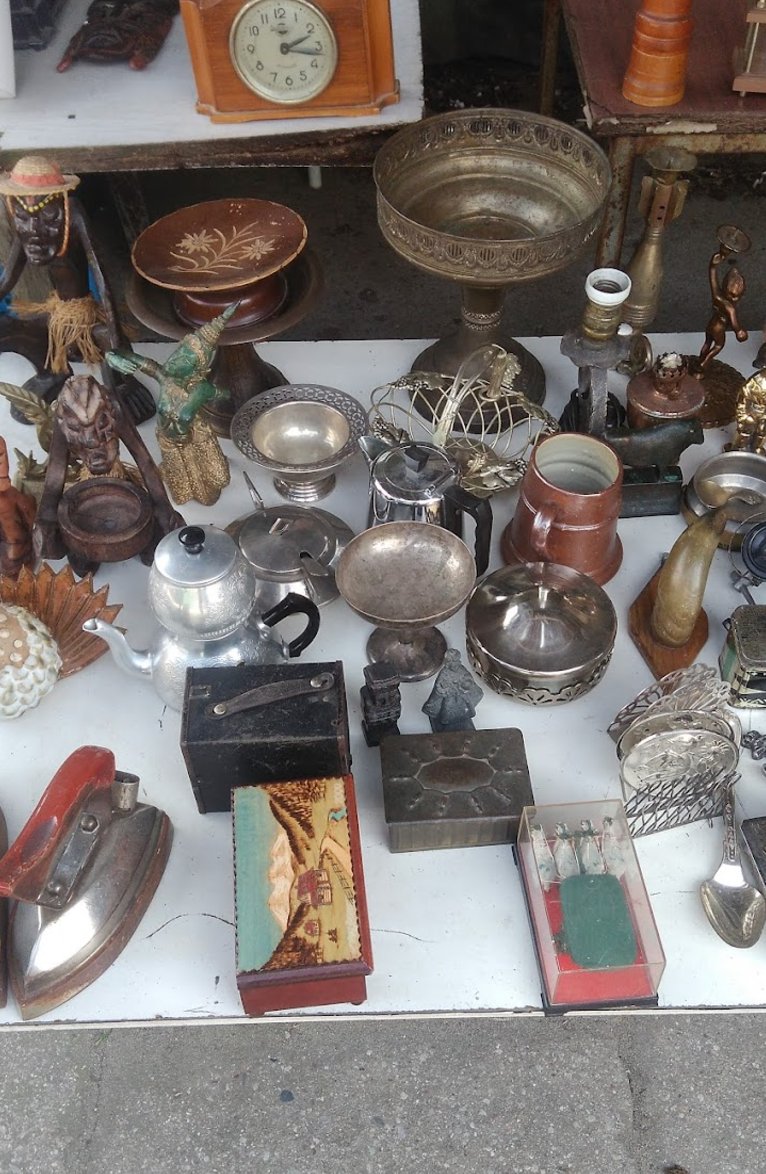
Don’t miss the colorful Różycki Bazaar – it’s where locals still shop for fresh produce and hunt for vintage treasures. Take time to explore the streets decorated with impressive street art, where local artists have turned ordinary walls into stunning murals.
While most of Warsaw’s left bank was rebuilt, Praga still has its pre-war buildings, giving you a genuine taste of old Warsaw.
Jewish Quarter (11:30-13:00)
A quick hop on public transport takes you to one of Warsaw’s most significant areas. In the former Jewish ghetto, you can still see pieces of the original ghetto wall along Sienna Street.

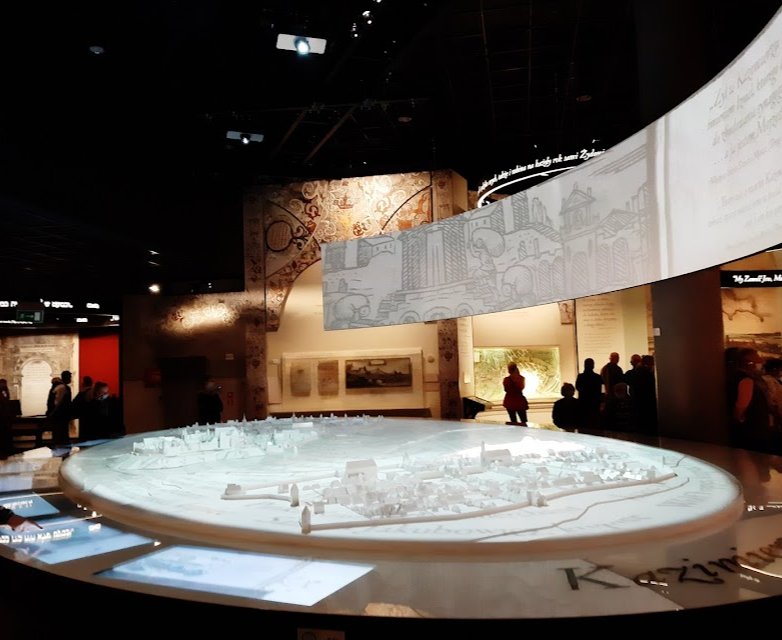
Your first stop should be the POLIN Museum, which brings to life a thousand years of Polish-Jewish history through engaging exhibits and fascinating artifacts. From there, head to the Ghetto Heroes Monument – a powerful black stone memorial marking the spot where the 1943 Ghetto Uprising began.
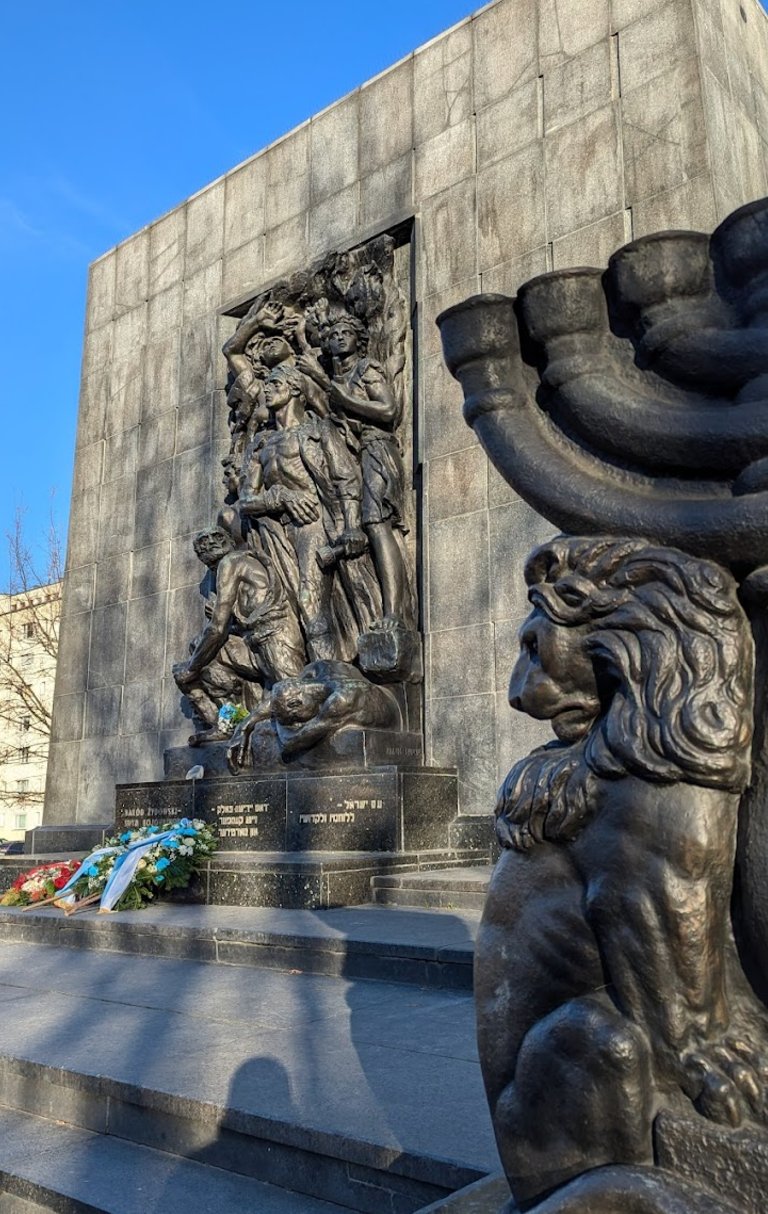

The route ends at Umschlagplatz – the square from which Warsaw’s Jews were sent to death camps, now marked by a white cube memorial bearing victims’ names. Keep an eye out for the plaques and stones in the sidewalks that trace the old ghetto boundaries.
You’ll find several authentic kosher restaurants in the area serving traditional Jewish dishes. Próżna Street, with its surviving pre-war buildings, gives you a glimpse of what the Jewish quarter looked like before the war.
Lunch in Wola District (13:00-14:00)
Next, grab public transport to Wola. In this modern district where old meets new, you’ll find plenty of great lunch spots. The Warsaw Breweries complex is full of excellent restaurants – you really can’t go wrong here!
Wola District (14:30-16:30)
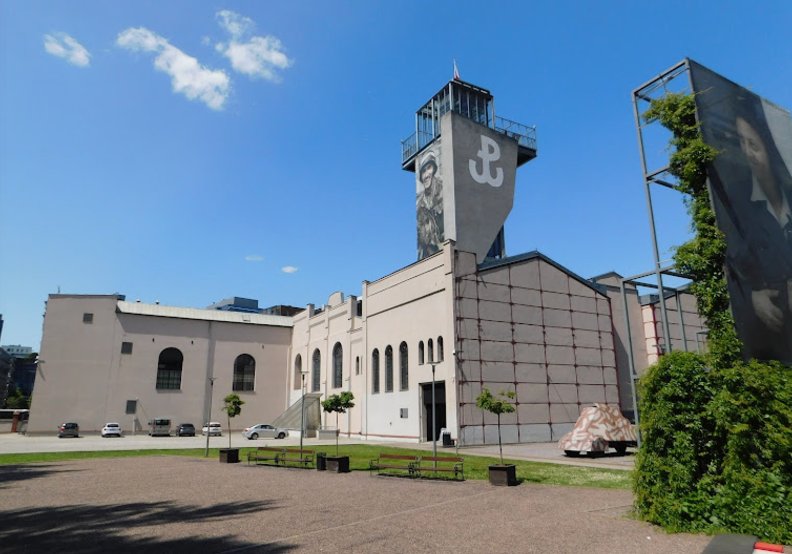
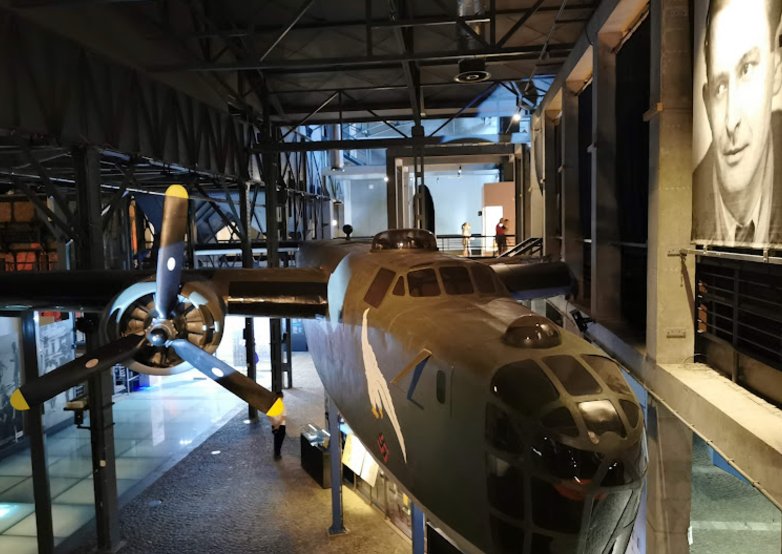
The highlight of Wola is the Warsaw Uprising Museum, housed in an old tram power station. Through personal stories, documents, and interactive displays, it brings the events of 1944 to life.
You’ll want at least two hours here – there’s lots to see across multiple floors and halls. Afterward, take a stroll to European Square (Plac Europejski), where you’ll see a cool mix of modern and historic architecture.
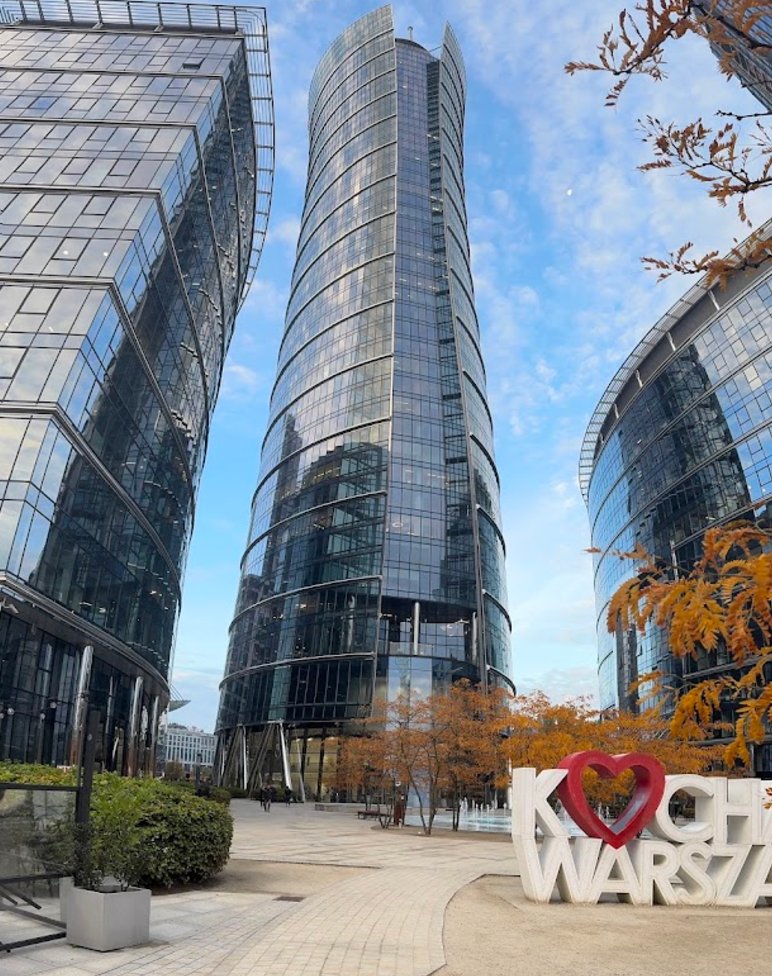
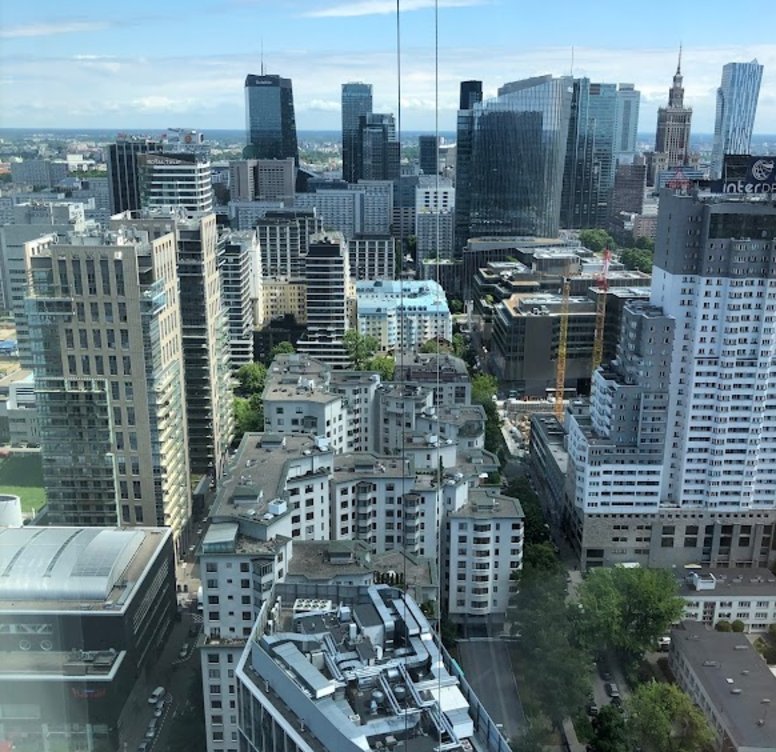
The square is dominated by the Warsaw Spire – an impressive 220-meter glass skyscraper. Take a break at one of the square’s outdoor cafes before moving on.
Street art fans should check out the huge murals on nearby buildings, part of a project to breathe new life into the area. As you walk around, you’ll notice how the sleek business district contrasts with pockets of Wola’s industrial past.
Powiśle District (17:00-20:00)
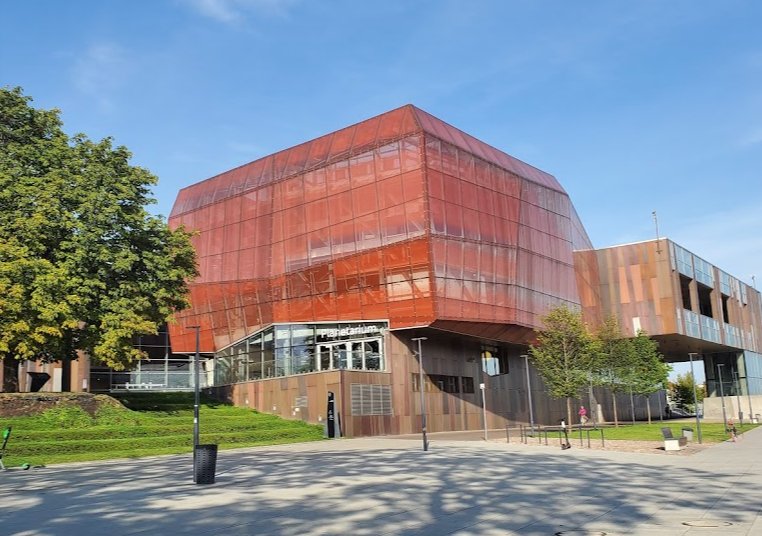
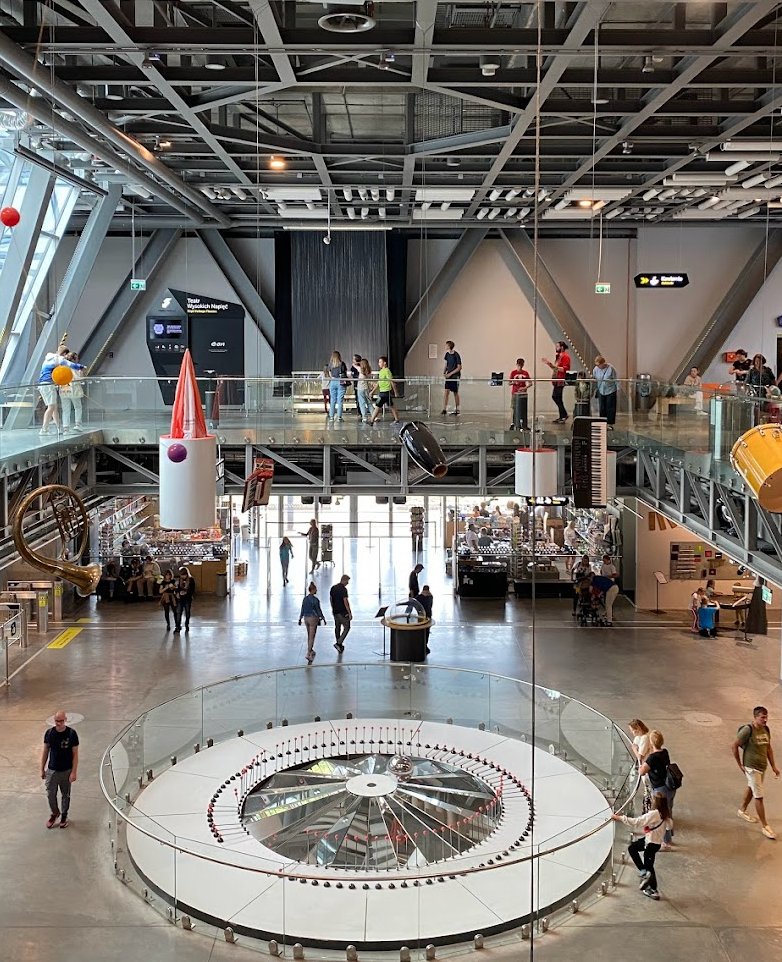
Time to head down to the riverfront. Start at the Copernicus Science Centre – it’s a must-visit spot where you can get hands-on with physics, chemistry, and biology through fun interactive exhibits.
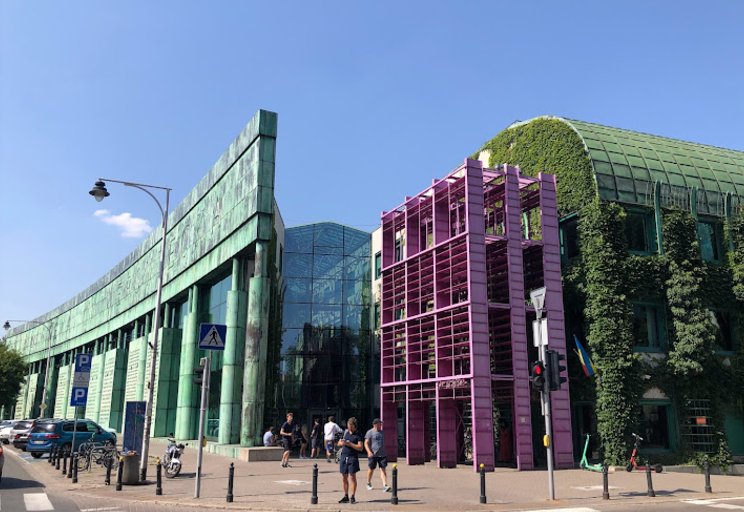
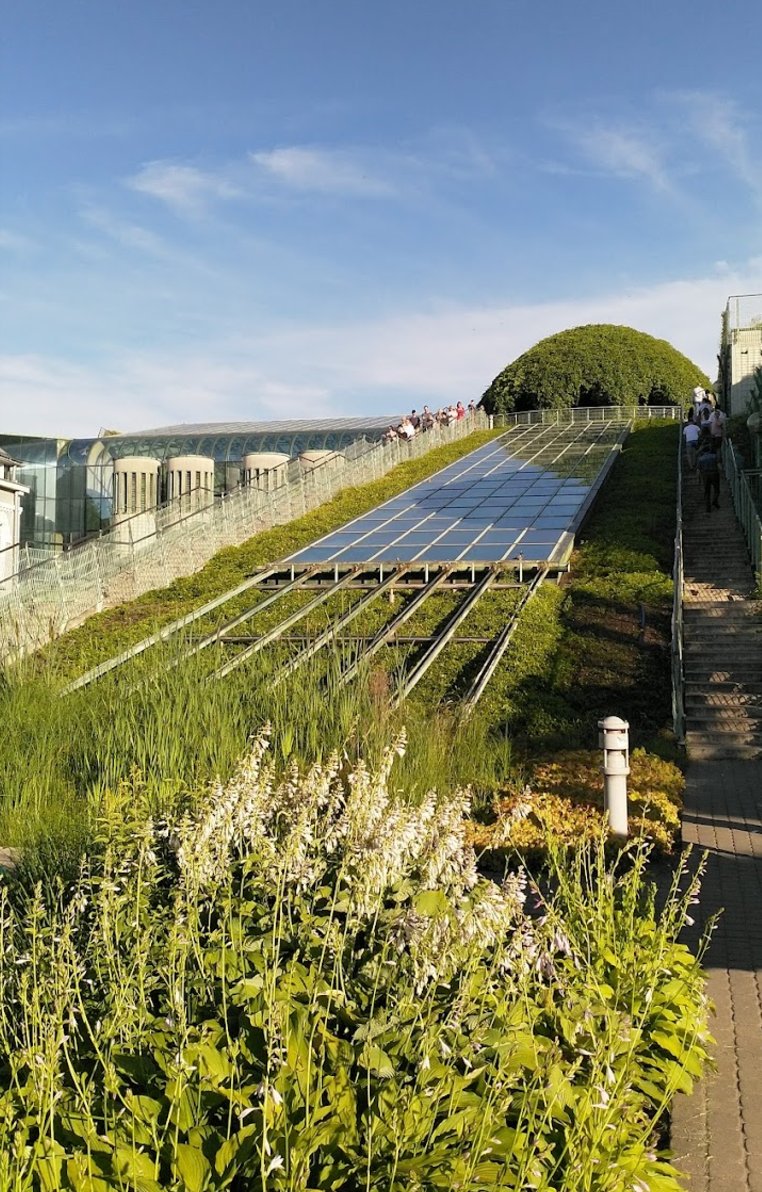
Right next door is the University of Warsaw Library – make sure to check out its rooftop garden for amazing views of the river and eastern Warsaw.
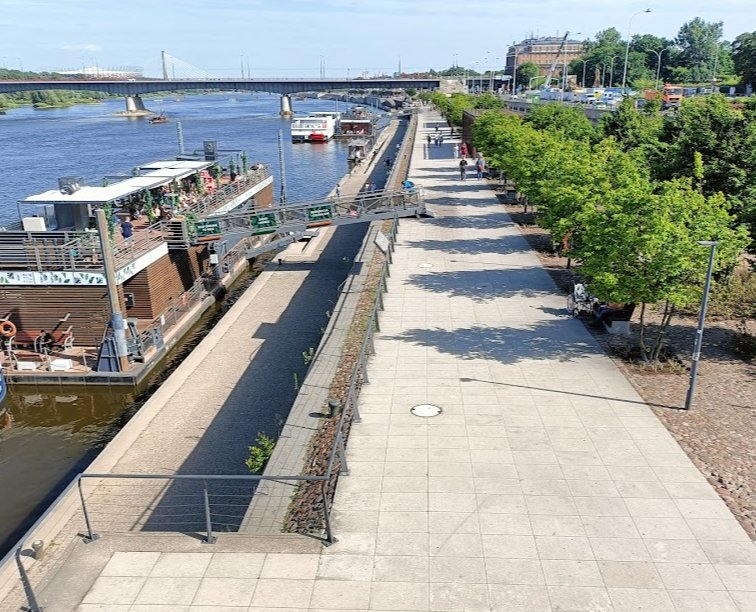
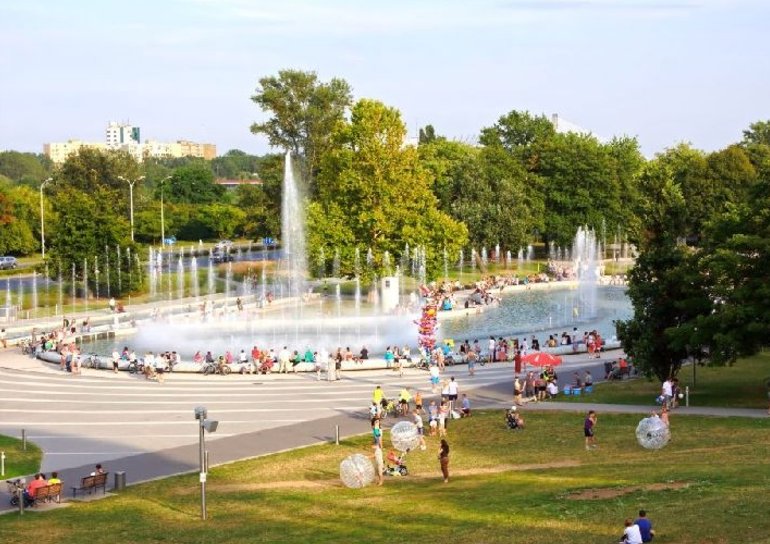
In summer, the riverbank comes alive with beach bars and sun loungers. If you’re visiting between May and September, catch the weekend shows at the Multimedia Fountain Park – they put on fantastic displays with music and lights.
Take a sunset walk to the Świętokrzyski Bridge for perfect views of the Old Town all lit up.
The area is packed with cool riverside restaurants where you can enjoy dinner with a view of the water. Cap off your evening at one of the local jazz clubs – this neighborhood is known for great live music.
